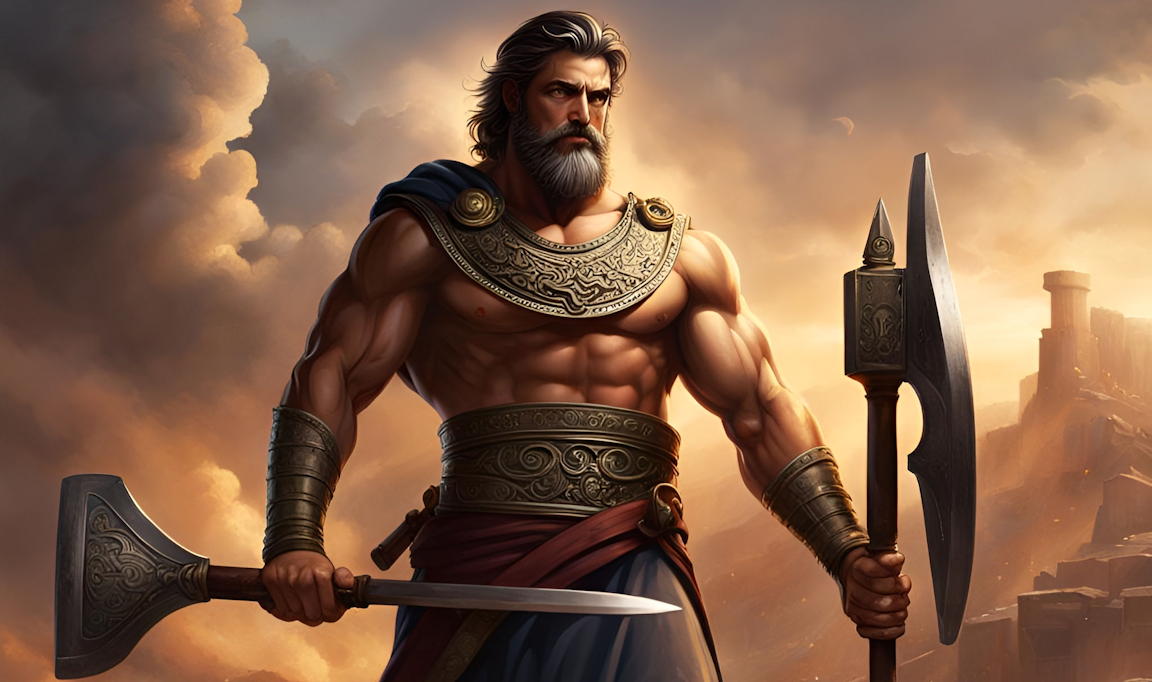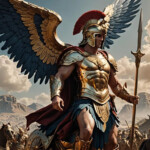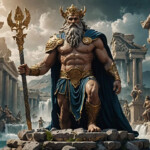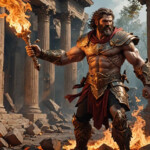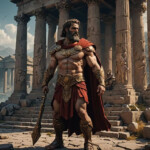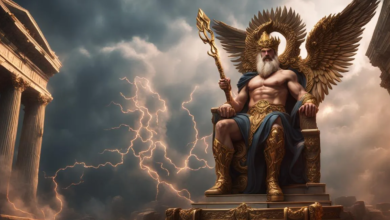Hephaestus, the Greek god of fire, metalworking, and craftsmanship, occupied a unique position on Mount Olympus. Unlike his perfectly sculpted brethren, Hephaestus was born lame, a deformity that brought shame upon his mother, Hera, queen of the gods. In some myths, she cast him from the heavens in disgust, while others tell of a power struggle with Zeus, where Hephaestus intervened and was hurled from the sky as punishment. Landing with a crash, the fall solidified his lameness but also birthed a deep connection to the earth’s fiery heart.
Hephaestus found solace in volcanic depths, the flames igniting a passion for creation. He established his forge within these fiery mountains, the rhythmic clang of his hammer against the anvil echoing through the caverns. He became the divine blacksmith with unmatched skill, crafting magnificent weapons and armour for the gods. The gleaming breastplate of Achilles, Hermes’s winged helmet, and Apollo’s chariot – all bore the mark of Hephaestus’ ingenuity.
Despite his talent, Hephaestus remained an outsider on Olympus. His physical imperfections set him apart from the idealised beauty of the other gods. Yet, his creations were coveted by all. Even Zeus, the king of gods, relied on Hephaestus’ expertise. Hephaestus, in turn, used his position to his advantage, crafting intricate traps and thrones to secure his place within the Olympian court.
One myth details a particularly ingenious creation – a golden throne gifted to Hera. Unbeknownst to her, the throne was enchanted, binding her with invisible chains. The humiliated queen became a prisoner in her own palace, and it was only through the intervention of Dionysus, the god of wine and revelry, that Hephaestus agreed to release her. This episode highlights the complex character of Hephaestus. Though ostracised, he possessed a cunning intellect and a touch of vengeance, refusing to be solely defined by his deformity.
Hephaestus’ most curious relationship was with Aphrodite, the goddess of love and beauty. Zeus orchestrated their marriage in an unlikely pairing, hoping to prevent a war amongst the gods vying for Aphrodite’s hand. The contrast between the beautiful goddess and the lame blacksmith was stark, and their union remained a source of amusement and gossip amongst the Olympians.
There are conflicting accounts of their marriage. Some portray a loving partnership, with Hephaestus showering Aphrodite with exquisite jewellery forged from precious metals and gems. Others depict a loveless union, with Aphrodite drawn to the more virile charms of Ares, the god of war. When Hephaestus discovered their infidelity, he devised a clever trap, snaring the lovers in an unbreakable net for all Olympus to witness. Humiliated, Ares retreated, and Aphrodite returned to Hephaestus, though the true nature of their reconciliation remains shrouded in myth.
Beyond his role as an Olympian craftsman, Hephaestus was also revered by human artisans. Blacksmiths, sculptors, and metalworkers across Greece saw him as their patron deity, offering prayers and sacrifices for his blessings. Hephaestus’ influence extended to the natural world as well. Volcanoes were considered his workshops; the smoke and ash symbolised his forge. Whenever Mount Etna or any other volcano erupted, it was attributed to Hephaestus’ tireless labour.
Hephaestus’ story resonates because he defies the typical image of a god. He is flawed, ostracised, yet immensely talented. His creations are testaments to both his ingenuity and his isolation. He wields the power of fire, a destructive and transformative force mirroring the complexities within him. Hephaestus remains an intriguing figure in Greek mythology, a reminder that true power can reside in unexpected places and that even the most ostracised can forge their own path to greatness.

